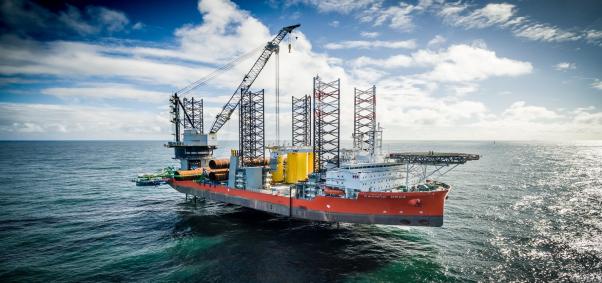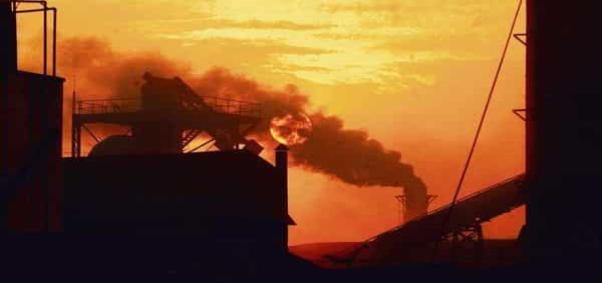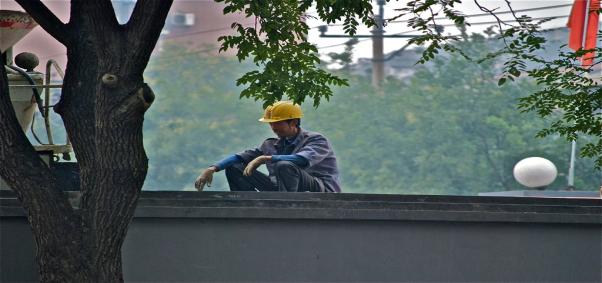
SPEECH DELIVERED AT THE NCE DINNER HOSTED BY THE FOREIGN AND ENVIRONMENT MINISTERS OF SWEDEN
June 26, 2014
Your Excellences, Ministers, and Ambassadors,
Ladies and Gentlemen,
I would like to start by thanking you all for the honor of addressing you today. Special thanks are due to Minister Ek for her brilliant initiative and strong support for our work, and of course to Minister Bildt for inviting us all.
We all know the facts. Climate change is a reality, and a consequence of the emission of greenhouse gases due to human activity in the last century. Temperatures are rising as are sea levels. The last three decades have been the hottest in history. We are now seeing a sample of what could happen in the future. In the past year, the worst typhoon in history killed more than 6,000 people in Philippines, and California registered its worst ever drought. If we don’t change our behaviour, there will be catastrophic consequences for human beings.
So the key question is: if the picture is so obvious, why have we not taken action to address climate change? If that is so clear, why do governments and businesses not act?
Part of the problem is that, for many decision makers, fighting climate change means huge economic sacrifices.
They assume that there is a dilemma between taking action against climate change and promoting economic growth. If we are not able to provide a viable economic alternative for governments and businessmen, one that could be able to generate economic growth for the people and revenues for the companies, there will be no action on climate change, regardless the seriousness of the risks ahead.
This is exactly the reason why seven countries - Indonesia, Ethiopia, Colombia, South Korea, Norway, the UK and Sweden - asked for action and formed the Global Commission on the Economy and Climate. They believe it is possible to do both. This Commission consists of a group of former heads of government, finance ministers, heads of international organisations and prominent business leaders.
The Commission directs the New Climate Economy project. This is an enormous effort by a team of experts, under the direction of Nicholas Stern, the co-chair of the Commission, that also includes economists like Nobel prizewinner Daniel Kahneman and Professor Philippe Aghion of Harvard University.
Tomorrow, the Commission will discuss here in Stockholm its emerging findings, which will be published in September before the UN leaders’ summit.
Science has rested its case. Now it is time for economists to make theirs’. It is possible to have economic growth while fighting climate change, reducing poverty and creating jobs. However, for some of us, as we will discuss it tomorrow, there is an even more startling conclusion. It is not only possible, more than that, we believe that tackling climate risk is the only way to have strong and sustained long-term economic growth.
And let me tell you why. Putting the economy on the right path of facing the climate risks ahead by using the appropriate regulation leads to various positive outcomes.
One is innovation. Innovation is the result of the human ability to come up with new ideas and processes that allow us to reduce costs and improve our lives. This innovation is capable not only of compensating for the costs that regulation causes but also of increasing the productivity of the economy, which is the only way to increase global growth. Innovation can be driven by climate change policies.
Looking at the global economy today, you could say the report has arrived just in time. Developed economies, after the Great Recession have failed to regain robust growth. Are they headed for a period of extended stagnation? OECD countries grew only 1.3 percent in 2013.
Developing economies also are struggling to regain their dynamism. The IMF and the World Bank estimate their growth has fallen below 5 percent these years. Much of their growth in the past decade has been “catch-up” growth.
That is, growth achieved by absorbing new ideas and technologies from somebody else. But this is not enough. Steady growth mainly requires improving human capital and basic institutions of governance as well as creating a good business environment. It also requires structural transformation, the constant birth and expansion of new higher productivity industries with labour, capital and entrepreneurs moving from traditional lower productivity activities to modern ones. It also requires resource efficiency.
What many economies are finding out is that only by establishing the right regulation, the right pricing for natural resources - including pricing carbon emission and eliminating fossil fuels subsidies - can they promote an increase in the productivity of an economy’s resources and that this is the only way to increase economic growth.
The second argument is very well known. As Nick Stern says: the costs of inaction are truly higher than the costs of acting now. Today, it is impossible to build strong economies by ignoring climate risks.
In the next few years, decisions regarding removing fossil fuels, pricing carbon, redesigning future cities, and stopping deforestation must to be taken in order not only to prevent a dangerous rise in temperatures but also to reinvigorate economic growth.
We need to end uncertainty for business and government. Make no mistake; humanity will take action about climate change sooner or later. The key is to change now because the costs of changing later will be much higher and by then it could be too late.
If governments and Congresses are reluctant to act, then so are businessmen. As my friend Paul Polman, member of our Commission noted: for most of the people who decide the flow of money - whether to invest in oil sands or solar cells - are simply not convinced that governments are serious about the transition to a low-carbon economy.
Probably one of the most expensive, non-estimated cost of the current economy is the policy ambiguity on climate change. We need to defeat the strategy of “wait and see” that most governments and companies have.
Many global companies are actually incorporating an internal carbon price, in preparation for a very possible external carbon price. They realise that such policy will be implemented sooner or later. However, they are delaying green investments because of uncertainty. This policy ambiguity raises the cost of capital of the transition.
This green economic future will not happen by itself. Strong decisions should be made at the top levels. Acting in a partial and timid way will not fix the problem. Inconsistent policy settings and isolated steps confuse investors and induce costly “hedging” behaviour as economic actors invest in both brown and green assets and increase their cost. We need to provide strong signals and clear political policies.
Only policy certainty creates confidence, drives investment, creates jobs, and lowers costs. Policy certainty will trigger investment in low carbon, generating huge benefits for first movers.
Perhaps some of the most important finding is that we urgently need to work on three types of systems or we will fail: our energy system, our land use system and our urban development system. If we fix these, we will be most of the way to reducing climate risk.
We have to concentrate our efforts on de-carbonising energy. One first step could be accelerated the policy of picking low hanging fruit. A big part of the emissions reductions we need can be achieved through initiatives that are profitable for the private sector, that have a positive net present value. In other words: there are a lot of no regrets action that governments and companies can take.
Pricing carbon is critical to decarbonise the economy. We must provide the right economic signals to the markets.
Since European governments put in place regulations to stimulate renewable energy and put a price on the use of carbon innovation in energy generation has soared. Further innovation is also going to make households more energy efficient without costing much. This is the innovation effect, not just offsetting the costs of the regulation but also increasing the productivity of the economy.
Second, we have to make better use of our land by improving agricultural productivity while protecting and restoring natural environments. The global population is expected to grow by 1.7 billion by 2040 and the global middle class by more than one billion.
The task is climate sensitive. Agriculture, land use change and deforestation account for around 24% of global greenhouse gas emissions. We need to create and finance a new green revolution, one that feed the growing population while avoiding deforestation and increasing productivity and restoring degraded soils.
Many farms in the developing world would benefit from injections of clean technology and green capital while ongoing research will continue to provide farmers with better crops. This is all possible. Brazil has seen crop yields quadruple and livestock productivity double in the last 25 years while deforestation rates have fallen 70 percent.
The government and the private sector have invested in research into soil improvement and new crops while providing more financing for farmers.
Mexico has introduced successful programs to protect and restore forests through payment for environmental services. These programs have the added benefit of providing an income for the poorest people.
Finally, we face a great challenge but also a great opportunity in building the cities of tomorrow. By 2030 around 60 percent of the global population will live in urban areas, indeed for the first time in human history half of the world already lives in cities.
And that could mean another 100 new cities with a population of a million in each in addition to the increase in the size of current cities. How we design these cities will determine the future trajectory of greenhouse gas emissions.
The dominant growth model currently being pursued by many of the world’s cities is characterised by urban sprawl, with low densities and high rates of car use. If current development trends continue, the global area of urbanised land will triple from 2000 to 2030, while the number of cars could double, from one billion today to two billion.
This pattern of unplanned, unstructured urban sprawl has major costs from increased congestion, accidents and pollution.
An alternative pattern of urban growth is available. This is the ‘compact, connected and coordinated’ model. It is based around higher densities, mixed neighbourhoods and walkable local environments. It prioritises mass use of public transport, such as through bus rapid transport systems, and the use of information technology to achieve ‘smarter’ utilities and buildings.
However, this green economic future will not happen by itself. Strong decisions need to be made at the top levels. Acting in a partial and timid way will not fix the problem. Inconsistent policy settings confuse investors. Only policy certainty creates confidence, drives investment, creates jobs, lowers risks to R&D, and lowers costs. Policy certainty will trigger investment in low carbon, generating huge benefits for first movers.
None of this will be possible without establishing the right economic incentives. Some form of carbon pricing mechanism that helps the transition to renewable energy is needed to provide the right economic signals to the market.
Nobody is pretending we can fight climate change with no costs –there will be losers as well as winners. We will have to support the losers with bold mechanisms for a fair transition to the new economy. But overall, I truly believe this shift will lead to faster growth and job creation.
Ladies and Gentlemen,
In the last 25 years we have seen the fall of the Berlin Wall, the rise of the internet, the incorporation of China into the global market and the building of a truly global economy. Whether we like it or not, our economies will undergo major structural changes over the next 25 years as we adapt to a changing world.
The decisions we all take this year will start to shape that future, and determine its path. Let’s work together to build the new climate economy; let us unite to face the most important challenge of this twenty first century, and together overcome it.
Thank you.






